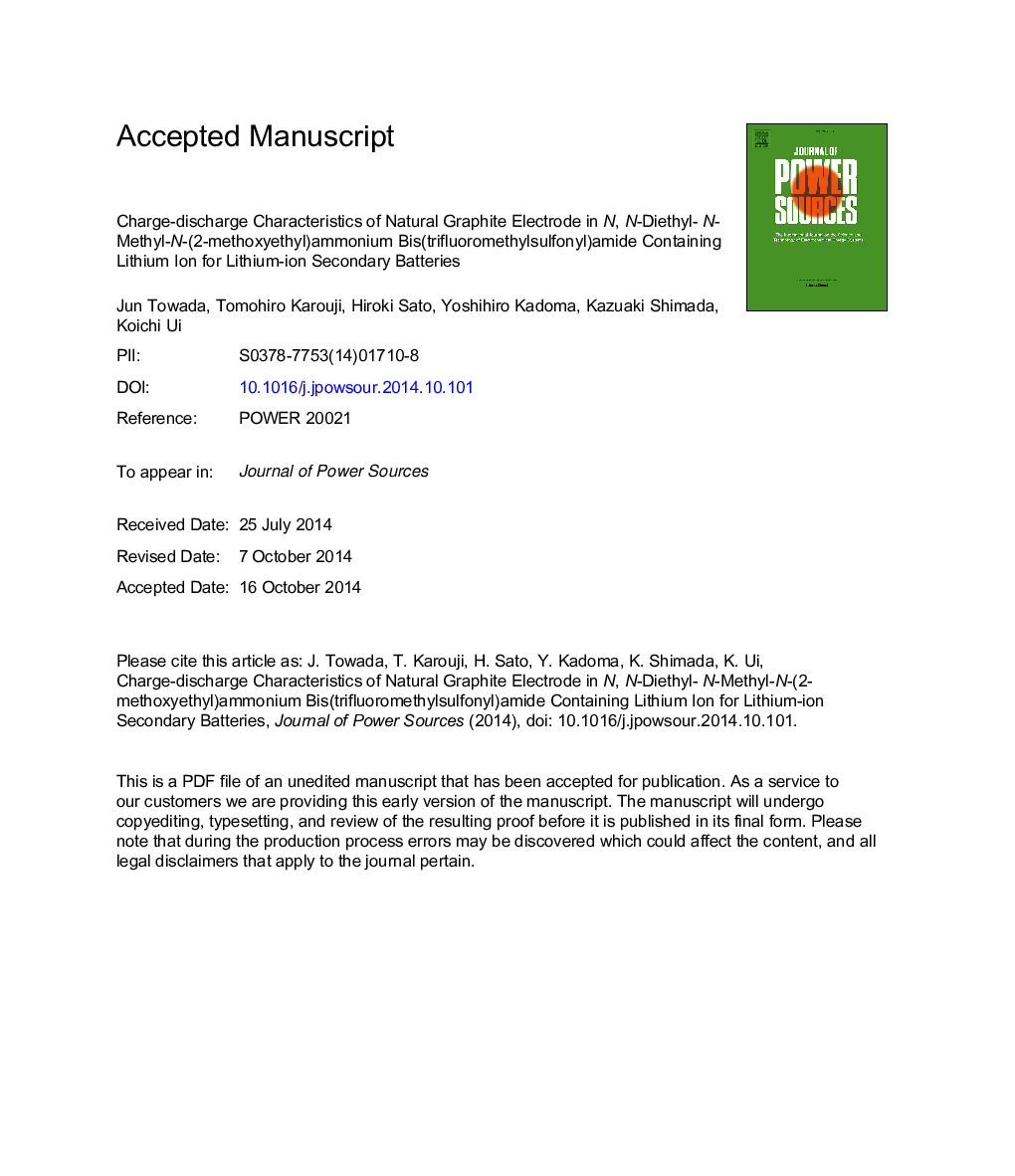| Article ID | Journal | Published Year | Pages | File Type |
|---|---|---|---|---|
| 7734302 | Journal of Power Sources | 2015 | 28 Pages |
Abstract
We investigated the electrochemical characteristics of a natural graphite electrode in room-temperature ionic liquids not containing additives. N, N-diethyl-N-methyl-N-(2-methoxyethyl)ammonium bis(trifluoromethylsulfonyl)amide (DEME-TFSA) containing lithium bis(trifluoromethylsulfonyl)amide (Li-TFSA) as the electrolyte and a natural graphite electrode as the negative electrode material were employed. The charge-discharge tests showed that the discharge capacity and the charge-discharge efficiency of the natural graphite electrode at the 1st cycle were 318 mAh gâ1 and 75.6%, respectively. The cycle performance showed that the discharge capacity and the charge-discharge efficiency were stably maintained at ca. 320 mAh gâ1 and 100%, respectively, until the initial 10th cycle. The ex-situ X-ray diffraction measurements showed that lithium-graphite intercalation compounds, such as LiC12 and LiC6, were formed after the 1st charge. The structural change in the natural graphite electrode was reversible because graphite recovered to its original structure after the 1st discharge. These results clarified that the graphite electrode could operate as a negative electrode for lithium-ion secondary batteries in DEME-TFSA containing Li-TFSA without organic solvents.
Keywords
Related Topics
Physical Sciences and Engineering
Chemistry
Electrochemistry
Authors
Jun Towada, Tomohiro Karouji, Hiroki Sato, Yoshihiro Kadoma, Kazuaki Shimada, Koichi Ui,
